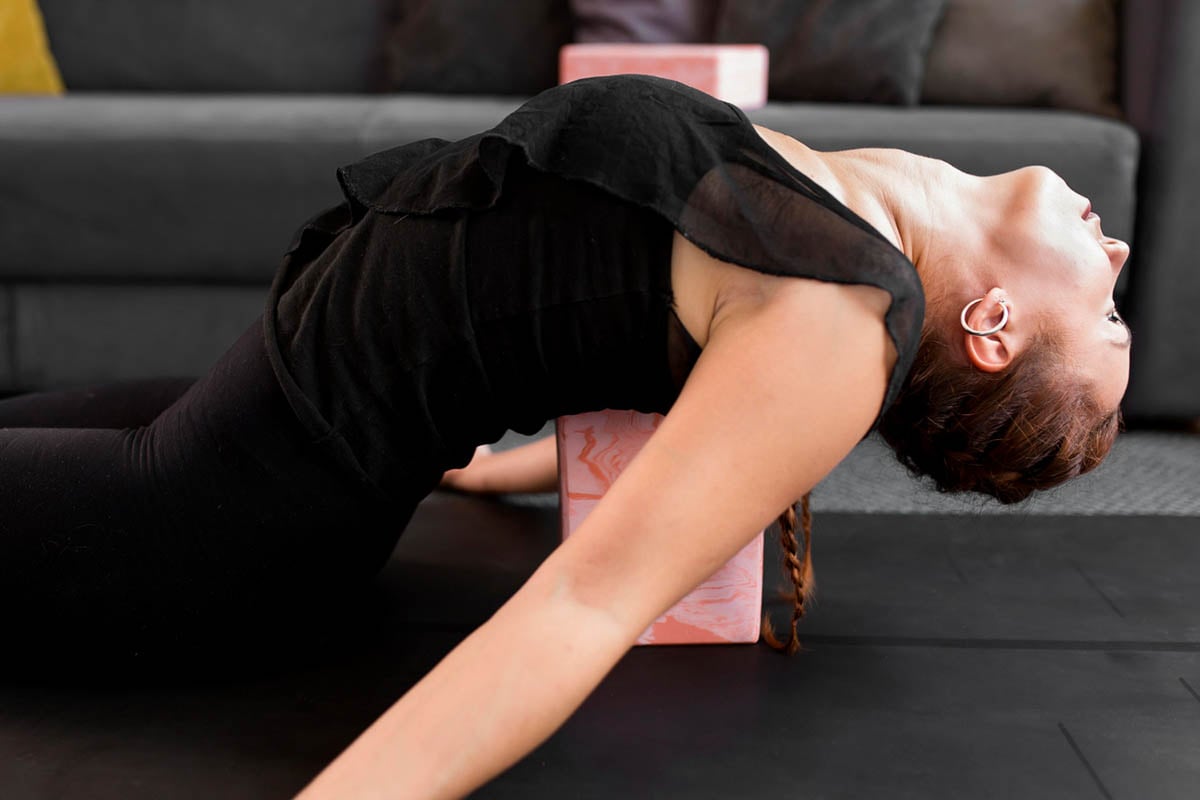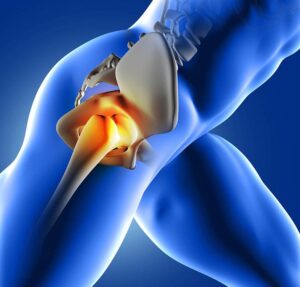Introduction A bulging disc in the neck, often referred to as a cervical disc herniation, can cause significant discomfort and limit your mobility. Recognizing the causes, identifying symptoms, and exploring effective treatment options, including stretches and gentle exercises for bulging discs in neck, can help you manage this condition effectively. This blog provides an in-depth …
Bulging Disc in Neck: Best Exercises and Stretches

Introduction
A bulging disc in the neck, often referred to as a cervical disc herniation, can cause significant discomfort and limit your mobility. Recognizing the causes, identifying symptoms, and exploring effective treatment options, including stretches and gentle exercises for bulging discs in neck, can help you manage this condition effectively.
This blog provides an in-depth look at the best exercises for bulging disc in neck, stretches to relieve symptoms, and the role of physical therapy in recovery.
Causes of a Bulging Disc in the Neck
A bulging disc in the neck or cervical disc herniation is a common issue that affects 1 in every 1000 adult individuals in the US. This condition occurs when one of the spinal discs in the cervical region protrudes out of its normal boundary. Common causes include:
Age-related wear and tear: As you age, the spinal discs lose their water content or dehydrate and lose their flexibility. This makes them more prone to bulging or herniated discs.
- Injury or trauma: Accidents, falls, or sudden impacts can cause a disc to bulge.
- Repetitive movements: Daily activities that involve repetitive neck movements or heavy lifting can strain the cervical spine.
- Poor posture: Prolonged poor posture, especially while using electronic devices, can contribute to disc problems.
Symptoms of a Bulging Disc in the Neck
Symptoms of a bulging disc in the neck can vary depending on the severity and the nerves affected. Common symptoms include:
- Neck pain: Persistent or occasional pain in the neck.
- Radiating pain: Pain that radiates to the shoulders, arms, and hands.
- Numbness or tingling: Numbness or tingling in the arms or fingers.
- Muscle weakness: Weakness in the muscles of the arms or hands.
- Limited range of motion: Difficulty moving the neck freely.
Benefits of Exercise and Physical Therapy for Bulging Disc in Neck

How Exercise Helps
Exercise is known as important in managing a bulging disc. It helps to:
- Strengthen muscles: Building strength in the neck, shoulder, and upper back muscles supports the spine and reduces the risk of further injury.
- Improve flexibility: Stretching exercises increase the flexibility of the cervical spine, reducing stiffness and pain.
- Enhance blood flow: Regular exercise boosts blood circulation, promoting healing and reducing inflammation.
Role of Physical Therapy
Physical therapy for bulging disc in neck is essential for a comprehensive recovery plan. A physical therapist can provide:
- Customized exercise programs: Tailored exercises that address your specific condition and needs.
- Manual therapy: Hands-on techniques to improve mobility and reduce pain.
- Education: Guidance on posture, ergonomics, and lifestyle modifications to prevent further issues.
Top Exercises for Bulging Disc in Neck
Chin Tucks
Chin tucks are a simple but effective exercise for bulging disc in neck. It can strengthen the neck muscles and improve posture.
- How to do it: Sit or stand upright. Gently tuck your chin towards your chest, making a double chin. Hold for a few seconds and release.
Trapezius Stretch (Lateral Stretch)
This stretch targets the trapezius muscle, which often becomes tight with neck problems.
- How to do it: Sit or stand upright. Gently tilt your head to one side, bringing your ear towards your shoulder. Use your hand to apply light pressure for a deeper stretch. Hold for 20-30 seconds and switch sides.
Cervical Retraction
Cervical retraction helps align the spine and relieve pressure on the discs.
- How to do it: Sit or stand with your back straight. Pull your head straight back, keeping your chin level. Hold for a few seconds and return to the starting position.
Neck Extensions
Neck extensions strengthen the muscles supporting the cervical spine.
- How to do it: Sit or stand upright. Slowly tilt your head back, looking up towards the ceiling. Hold for a few seconds and return to the starting position.
Scapular Setting Stretch
This exercise strengthens the muscles between the shoulder blades, which support the neck.
- How to do it: Sit or stand with your back straight. Squeeze your shoulder blades together and hold for a few seconds before releasing.
Stretches for Bulging Disc in Neck
Upper Trapezius Stretch
This stretches for bulging disc in neck helps relieve tension in the upper trapezius muscle.
- How to do it: Sit or stand upright. Tilt your head to one side and use your hand to gently pull your head towards your shoulder. Hold for 20-30 seconds and switch sides.
Levator Scapulae Stretch
Stretching the levator scapulae muscle can reduce neck stiffness.
- How to do it: Sit or stand upright. Turn your head to one side and look down towards your armpit. Use your hand to gently pull your head for a deeper stretch. Hold for 20-30 seconds and switch sides.
Exercises to Avoid with a Bulging Disc in Neck
High-Impact Activities
High-impact activities such as running or jumping can worsen a bulging disc and make the pain worse.
- Recommendation: Opt for low-impact and safe exercises like walking or swimming.
Heavy Lifting
Lifting heavy weights, especially overhead, can strain the cervical spine.
- Recommendation: Focus on bodyweight exercises or light resistance training.
Overhead Movements
Overhead movements can increase pressure on the cervical spine.
- Recommendation: Avoid exercises that involve lifting weights above your head.
How Physical Therapy Can Help
Assessment and Diagnosis
A physical therapist will conduct a thorough assessment to understand the extent of your condition.
Customized Exercise Plans
Based on the assessment, a therapist will develop a personalized exercise plan tailored to your needs.
Manual Therapy Techniques
Therapists use hands-on techniques to reduce pain and improve mobility.
Education and Prevention
Therapists provide valuable education on posture, ergonomics, and lifestyle modifications to prevent further injury.
How Sustain Physical Therapy and Performance Can Help

Expertise and Experience
Sustain PT and Performance offers expert guidance and extensive experience in managing bulging disc conditions.
Comprehensive Treatment Plans
Their treatment plans include a combination of exercises, manual therapy, and education to ensure comprehensive care.
Other Remedies for Bulging Disc in Neck
Pain Management Techniques
Managing pain from a bulging disc in the neck often requires numerous approaches. Several techniques can provide relief and improve comfort:
- Hot/Cold Therapy: Alternating between hot and cold packs can help reduce inflammation and relieve pain. Cold therapy can numb the area and decrease swelling, while heat therapy can relax muscles and improve blood circulation.
- Acupuncture: This traditional Chinese medicine technique involves inserting thin needles into specific points on the body to relieve pain and promote healing. Acupuncture can help reduce neck pain and improve overall well-being.
- Medication: Over-the-counter medications can help manage pain and inflammation. In severe cases, a doctor may prescribe a much stronger medication, such as muscle relaxants or corticosteroids, to provide relief.
Lifestyle Modification
Making certain lifestyle changes can be important in managing and preventing the recurrence of a bulging disc in the neck:
- Ergonomics: Ensuring proper ergonomics in your work and home environment can reduce strain on your neck. This includes using a chair with proper support in the back, keeping your computer monitor at eye level, and taking regular breaks to move and stretch.
- Regular Exercise: Incorporating regular, low-impact exercises such as walking, swimming, or cycling can help maintain a healthy weight and improve overall spine health. These physical activities enhance blood flow and reduce pressure on the spinal discs.
- Posture: Maintaining good posture while sitting, standing, and walking can significantly reduce the strain on your neck. Avoid slouching and keep your shoulders back and your head aligned with your spine.
- Sleep Position: Ensure you sleep in a position that supports your neck and spine. Using a supportive pillow and sleeping on your back or side can help reduce neck pain.
When to See a Doctor
Warning Signs
While many cases of a bulging disc in the neck can be managed with self-care and conservative treatments, it is essential to know when to seek professional medical help. Some warning signs that indicate the need for a doctor’s evaluation include:
- Severe Pain: If you experience intense pain that does not improve with over-the-counter medications or home treatments, it is important to consult a healthcare provider.
- Numbness or Tingling: Persistent numbness or tingling in the arms, hands, or fingers can indicate nerve involvement and should be evaluated by a doctor.
- Muscle Weakness: If you notice weakness in your arms, hands, or fingers, it may be a sign of nerve compression that requires medical attention.
- Loss of Coordination: Difficulty with coordination or balance can indicate a more severe condition and should be addressed promptly.
- Worsening Symptoms: If you have severe symptoms that progressively worsen despite following a treatment plan, it is important to seek medical advice to explore other treatment options.
Conclusion
Effectively managing a bulging disc in the neck involves a combination of targeted exercises, stretches, and professional physical therapy, which can significantly relieve symptoms, improve mobility, and enhance quality of life. Seeking expert guidance ensures a comprehensive treatment plan on how to fix a bulging disc in neck, promoting long-term spine health and prevention of further issues.
Frequently Asked Questions
What is the best exercise for a bulging disc in the neck?
Chin tucks and cervical retraction are among the best exercises for neck pain relief, as they help improve posture and strengthen the neck muscles.
Can you fix a bulging disc with exercise?
While exercises cannot fix a bulging disc, they can significantly relieve symptoms and improve overall neck health by strengthening supportive muscles and enhancing flexibility.
Can you massage a bulging disc in the neck?
Massage can help relieve muscle tension and pain associated with a bulging disc. However, it is essential to have it done by a trained professional to avoid further injury.
Dr. Adam Babcock PT, DPT
“We Help Active Adults Quickly Recover From Pain Or Injury So They Can Stay Active, Get Back To What They Love To Do, and Do It For Decades”






